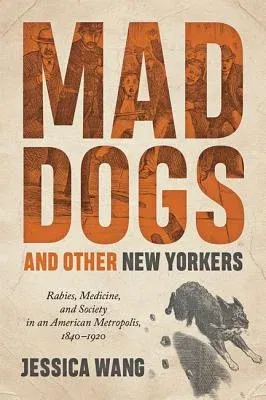How rabid dogs, the struggles to contain them, and their power over
the public imagination intersected with New York City's rise to urban
preeminence.
Rabies enjoys a fearsome and lurid reputation. Throughout the decades of
spiraling growth that defined New York City from the 1840s to the 1910s,
the bone-chilling cry of "Mad dog!" possessed the power to upend the
ordinary routines and rhythms of urban life. In Mad Dogs and Other New
Yorkers, Jessica Wang examines the history of this rare but dreaded
affliction during a time of rapid urbanization.
Focusing on a transformative era in medicine, politics, and urban
society, Wang uses rabies to survey urban social geography, the place of
domesticated animals in the nineteenth-century city, and the world of
American medicine. Rabies, she demonstrates, provides an ideal vehicle
for exploring physicians' ideas about therapeutics, disease pathology,
and the body as well as the global flows of knowledge and therapeutics.
Beyond the medical realm, the disease also illuminates the cultural
fears and political contestations that evolved in lockstep with New York
City's burgeoning cityscape.
Mad Dogs and Other New Yorkers offers lay readers and specialists
alike the opportunity to contemplate a tumultuous domain of people,
animals, and disease against a backdrop of urban growth, medical
advancement, and social upheaval. The result is a probing history of
medicine that details the social world of New York physicians, their
ideas about a rare and perplexing disorder, and the struggles of an
ever-changing, ever-challenging urban society.

